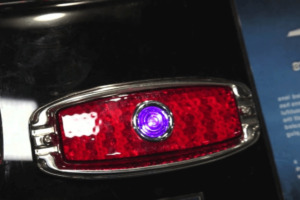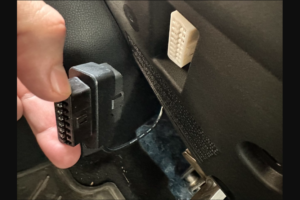Gaskets perform an essential function in protecting your engine. It forms a barrier that shields it from dirt, dust, and gas and fluid leaks that may damage it. To make sure that you have a long-lasting seal, you need to use the right kind of gasket and sealant. But do paper gaskets need sealant?
It is wrongly believed by many that a gasket is all it takes to provide a seal. But the truth is that sealant is essential in ensuring the durability of the seal.
Read on to know more about using sealant on the paper gasket.
Do Paper Gaskets Need Sealant?
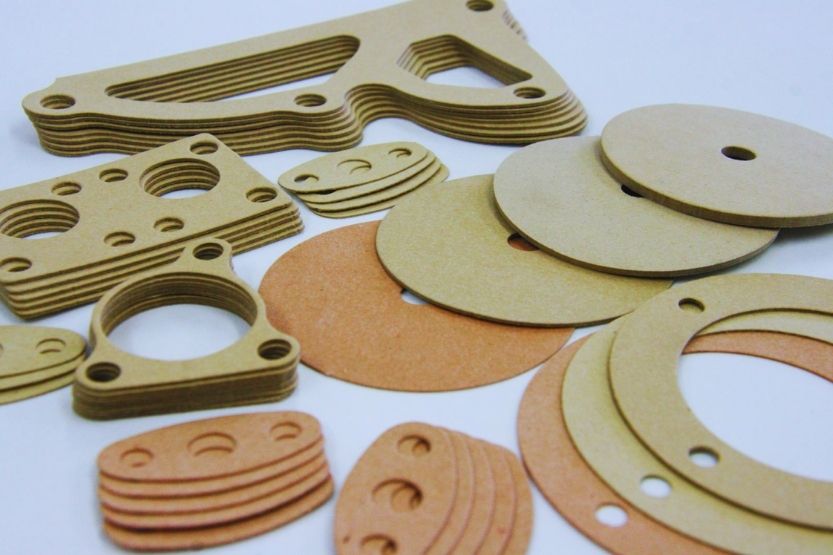
Many believed that a gasket is all it takes to provide a seal. But the truth is that sealant is essential in ensuring the durability of the seal. It provides an extra layer of protection against leaks.
Extra Protection Against Leakages
There are several benefits to using gasket sealants in the installation of a paper gasket. Among these benefits is extra protection against leakages. Dust, gases, and solvents could easily penetrate holes, gaps, and spaces between surfaces. Gasket sealants make sure that those gaps are filled to prevent leaks.
Increased Lifespan for Paper Gaskets’ Parts
Other benefits include strengthened mating between two surfaces and increased longevity of sealed parts. Meaning, when you use the gasket sealant properly, it will result in a stronger and longer-lasting seal.
Gasket applications also require sealants when working with oils or differential covers. This is to enhance the sealing ability and make sure that there is no leaks present.
What Is a Paper Gasket?
Sheeting Material Used to Make Gaskets
A paper gasket or gasket paper is the sheeting material used to make gaskets or seals for joining surfaces or components together.
No Paper on Its Parts
Despite the name, it has no paper on its parts. Instead, it has sturdy and flexible materials like cork, nitrile, rubber, and silicone. It is a cost-effective material that allows companies to manufacture a large number of gaskets quickly and efficiently.
Available in Different Sizes and Thicknesses
Paper gasket sheeting is available in a variety of sizes and thicknesses. To make a gasket, cut a small piece from the sheeting material. It is usually in the shape of an O-ring to form a leak-proof compressible seal to fit between machinery or pipework.
Experts named some gaskets after their specific function. For example, vehicle gaskets, as the name suggests, are for car engines.
What Are the Types of Paper Gaskets?
There are different types of paper gaskets. They are the following:
- Rubber Gaskets
- Cork Gaskets
- Silicone Gaskets
- Nitrile Gaskets
- Graphite Gaskets
- Asbestos Gaskets
- High Temperature Gaskets
- Exhaust Gaskets
1. Rubber Gaskets
A rubber gasket is an all-purpose, entry-level gasket paper that offers protection from gas leaks. Rubber gasket sheets also offer protection against alkali or mild acids.
On the downside, rubber gaskets are ineffective in high temperatures and pressures. This includes oil application.
2. Cork Gaskets
Cork gasket sheets are easily compressible. They do not react aggressively to fuels, oils, and solvents. But while they offer excellent vibration-dampening qualities, cork gaskets lack mechanical strength, particularly under the torso and flex.
3. Silicone Gaskets
Silicone gaskets are flexible, temperature-resistant, and feature waterproofing and electrical insulation properties. The silicone gasket sheets are suitable for use in outdoor environments, especially in moist places. Despite this, silicone gaskets are unsuitable for oils and steam.
4. Nitrile Gaskets
Nitrile gaskets are versatile and resilient in high temperatures. The nitrile gasket sheets offer protection against a wide variety of threats. These include oil and water leaks, hydrocarbons, and silicone greases.
This type of paper gasket is chemical resistant. However, they are not suitable for handling ketones, chlorines, and other oxidizing agents.
5. Graphite Gaskets
Graphite gaskets offer a wide variety of applications. The graphite gasket sheets are suitable for high pressure and temperature environments. While their carbon content concentration renders them flexible, it also makes them brittle. It requires fillers or metal cores to provide reinforcement.
6. Asbestos Gaskets
Asbestos gasket sheets are made from tough and fibrous material, so they are resistant to chemicals and extreme temperatures. Considering their material, however, working too closely with asbestos gaskets can pose a hazard.
7. High Temperature Gaskets
High temperature affects the flexibility and compressibility of a gasket sheet. That’s why high-vibration applications prove to be challenging for the more brittle high-temperature gasket sheets. Also, you cannot use high-temperature gaskets in applications that require complete leakage control.
8. Exhaust Gaskets
Exhaust gaskets can withstand high temperatures for extended periods without faltering. The exhaust gasket sheets are for extraction systems, venting, and machinery applications. This type of paper gasket is also resistant to gas leaks and is easy to clean and maintain.
What Causes Paper Gaskets to Fail?
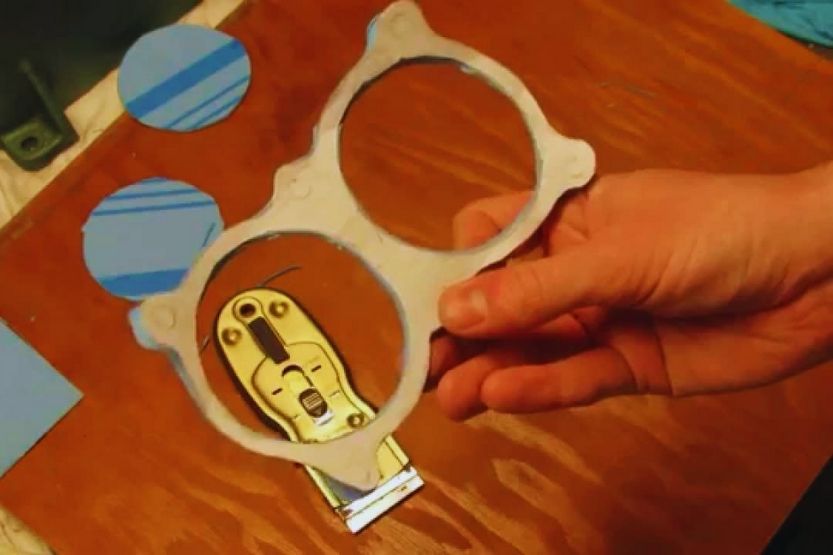
The purpose of a gasket is to keep dirt, dust, fluids, gases, and electrostatic charges from limiting the functionality and performance of the engine. However, paper gaskets can fail if you do not properly install and seal them.
Symptoms of a Failing Paper Gasket
One indication of gasket failure is loss of coolant, whether there is a sign of leakage or not. Other symptoms include the following:
Aside from these, gasket failure can also cause coolants, gases, and other materials to damage and destroy your engine.
Poor Paper Gasket Installation
Usually, the cause of paper gasket failure is poor installation. It can also be because you use the wrong kind of fastener or the procedure that you use is unsuitable. This could then result in a leak due to uneven clamping. To prevent such an occurrence, it becomes necessary to use sealant on the paper gasket.
What Are the Types of Gasket Sealants?
There are several types of gasket sealants. These include the following:
- Shellac Gasket Sealant
- High Tack Gasket Sealant
- Gasket Makers
- Copper Gasket Sealant
- Anaerobic Sealant
- RTV Silicone Gasket Sealant
Let’s briefly talk about each gasket sealant type to understand them better:
1. Shellac Gasket Sealant
Alternatively known as the Indian head shellac, it’s best to apply the shellac gasket sealant on cardboard or thin paper gaskets. Also, it is ideal for low temperatures from 300 to 350⁰F, as well as low-pressure usage.
Technicians choose the easy-to-remove shellac gasket sealer due to its resistance to motor fluids. Because of this, you can use it in mounting a thermostat for timing differentials and cover gaskets.
2. High Tack Gasket Sealant
Like a shellac gasket sealant, the high tack sealant has diesel, kerosene, and propane resistance. It can also handle up to 500⁰F of high temperature. Aside from these, a high tack sealer is non-drying and remains tacky even after application.
3. Gasket Makers
Gasket makers are available in three forms, each with a 400⁰F temperature capacity. The first is a fast-hardening and fast-drying form. You can use it in installing threaded connections to block expansion plugs. Also, you can use it in creating seals between two metals.
The second form of this gasket sealant is the brushable and slow-drying gasket maker. You can use this on cork oil pans or paper and neoprene transmission pan gaskets.
Meanwhile, you can use the non-hardening gasket maker in adding seals to hose connections.
4. Copper Gasket Sealant
You can utilize copper gasket sealants to fill in gaps between metals. These include cylinder head gaskets and exhaust manifolds. This will provide a definite seal, helping distribute heat and promoting even transfer between mating components.
Copper sealers are mainly applied in cylinder head gaskets because they are capable of handling up to 500⁰F. Also, you can easily remove them even after long periods following installation.
5. Anaerobic Sealant
These sealers are primarily applied in the absence of an external air source to facilitate drying. Anaerobic sealants come in tubes and are red. Also, they are not corrosive and apply to situations where no replacement or gasket is available.
6. RTV Silicone Gasket Sealant
Short for Room Temperature Vulcanizing, RTV silicone gasket sealants are used in high temperatures up to 75⁰F. Silicone sealers come in a variety of colors that indicate their specific level of heat tolerance.
For instance, blue, gray, and black are up to 500⁰F. Red and orange are up to 650⁰F, while copper is up to 750⁰F. Ultra RTV and RTV silicone sealants are available in tubes, aerosol cans, and caulk gun-style cartridges.
Again, do paper gaskets need sealant? With the paper gasket’s flat surface plus proper torquing, you should not need a sealant. However, sealants can offer extra protection against leaks.
What Are the Most Common Gasketing Mistakes?
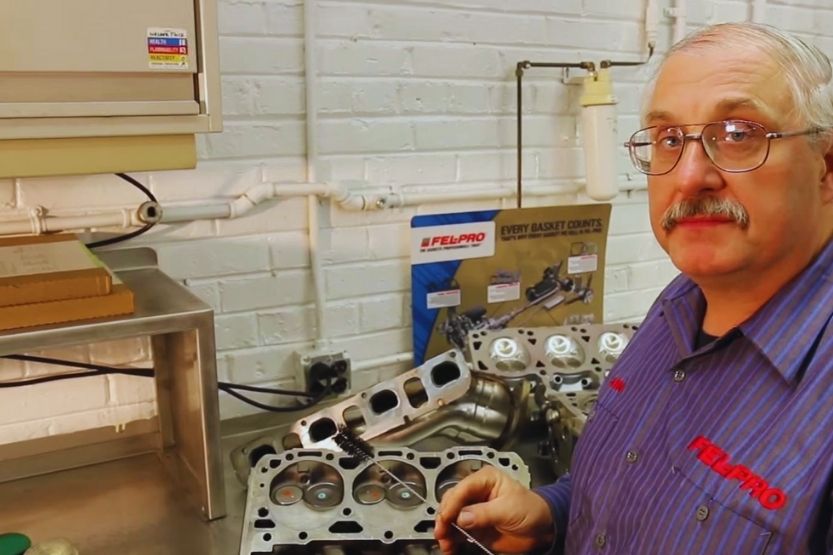
The following are the most common gasketing mistakes:
- Incomplete Surface Preparation
- Application of the Wrong Amount of Sealant
- Use of the Wrong Kind of Gasket Maker
- Application of a Gasket Maker Instead of a Standard Gasket
- Use of Anaerobic Gasket Makers to Seal Large Gaps
- Insufficient Curing Time
- Partially Drying Non Solvent Gasket Makers Before Assembly
- Replacement of a Head Gasket with a Gasket Maker
- Rushed Assembly
- Replacement of Only One Gasket
1. Incomplete Surface Preparation
Before you begin to install a gasket, the surface that you’ll be working on must be fully prepared. This entails the removal of glue, old gaskets, and adhesives that are present on the metal and cleaning its surface. Failure to accomplish this will result in uneven mating surfaces.
It is not advisable to use a razor blade or any sharp object that can scratch the surface of the metal. The scratches could provide a channel through which fluids and gases can leak out. Instead, you may use a chemical cleaner or a brush or scraper made from plastic or nylon.
2. Application of the Wrong Amount of Sealant
It is essential to be aware if you are applying the right amount of sealant. For example, be mindful of whether or not you are applying too much gasket maker. The excess sealant will move to the other engine parts, causing them to clog up. If you use too little sealant, it will result in an insufficient seal.
To achieve the right amount, apply the gasket maker in a single continuous even bead of around 1/8 inches thick. This guarantees that the sealant will spread into a thin layer that tightens up during assembly. Make sure that you also circle all bolt holes during the application process.
3. Use of the Wrong Kind of Gasket Maker
Gasket makers and flange sealants are each designed for different purposes. For instance, some are resistant to high temperatures. The others serve as protection against specific types of leaks.
Using a particular type of flange sealant for an application that it was not designed for will yield undesirable results. Always make sure that the sealant you are using is appropriate to the application you are doing.
4. Application of a Gasket Maker Instead of a Standard Gasket
It is not recommended to use a gasket maker as a dressing for a standard gasket. This is because the formulation of a gasket maker is too thick to be employed as dressing. Also, you can avail of gasket sealers tubes, sprays, and liquid form, which you can use when you are installing a standard gasket.
5. Use of Anaerobic Gasket Makers to Seal Large Gaps
Anaerobic gasket makers are made for filling small gaps and holes ranging from 15 to 20 thousandths of an inch. For larger gaps, it is better to use an RTV gasket maker. It has a tighter seal with no present air pockets.
6. Insufficient Curing Time
When working with a solvent-based sealant, give it sufficient time to cure or dry. If not, the incomplete curing time will compromise the seal’s integrity.
For instance, solvent-based gasket makers allow the sealant to dry before reassembling. Also, add extra 10 minutes before torque rechecking.
RTV sealants need approximately two hours to set up and 24 hours to achieve a full cure. Some gasket maker formulas, however, allow for torque and go. This means that your car can be immediately put back in service without allotting a cure time.
7. Partially Drying Non Solvent Gasket Makers Before Assembly
It is usually assumed that gasket makers need to be cured before assembly. But such is not the case regarding non-solvent variants.
Most gasket sealants work best when they are immediately assembled while wet. But solvent-based sealants like anaerobic sealers won’t start curing until after assembling. This is because they don’t require oxygen to dry.
8. Replacement of a Head Gasket with a Gasket Maker
Most sealants can be used to replace standard or formed gaskets. But a gasket maker should never be used to replace a head gasket. When seeking a cylinder head replacement, always use the typical OE-style gaskets.
9. Rushed Assembly
While some sealants can be assembled immediately, others require at least 24 hours to dry before assembling. Always verify the drying time required by your gasket maker to avoid rushing into the assembly process.
10. Replacement of One Gasket Only
Replacing just one gasket instead of the entire set increases the odds of further gasket failure occurring in the future. It is advisable to install new gaskets for all parts at once.
Conclusion – Do Paper Gaskets Need Sealant?
It is wrongly believed by many that a gasket is all it takes to provide a seal. But the truth is that sealant is essential in ensuring the durability of the seal. It provides an extra layer of protection against leaks.
The durability of a seal relies on the quality of the gasket and sealant used in its installation. It is important to know the right type of sealant for your application and the proper way of using it. That way, you can avoid common gasketing errors and achieve the best results.

![Honda Brake Fluid [What You Need to Know] Honda Brake Fluid](https://roadsumo.com/wp-content/uploads/2022/02/Honda-brake-fluid-150x150.jpg)

![What Are Snow Tires [Do You Need Them?] what are snow tires](https://roadsumo.com/wp-content/uploads/2022/10/what-are-snow-tires-150x150.jpg)



